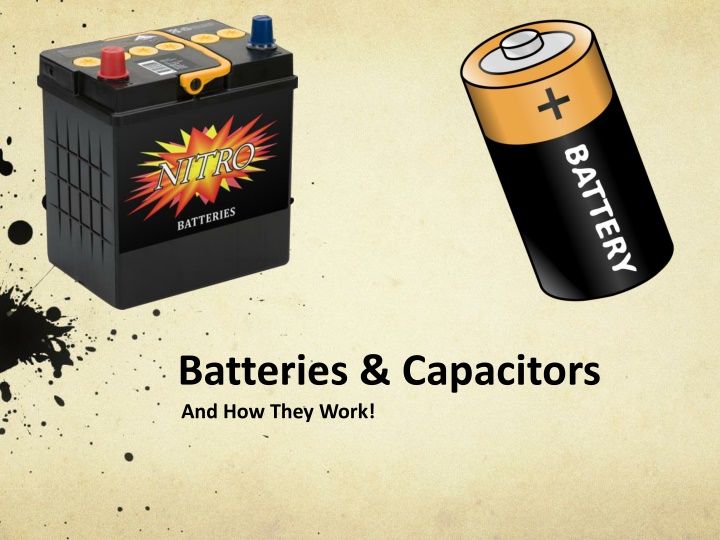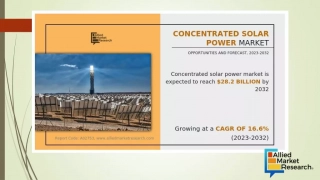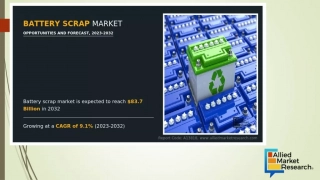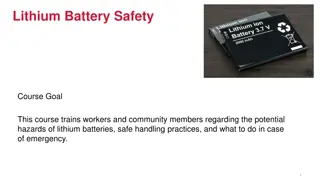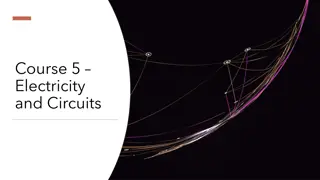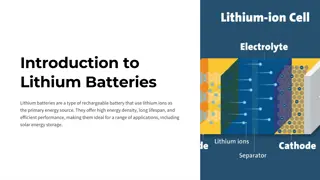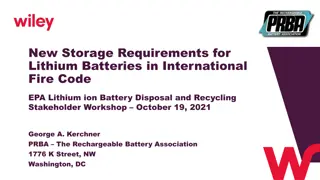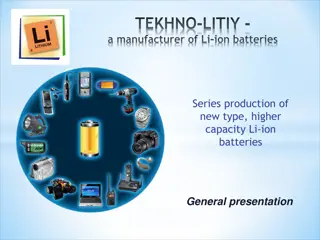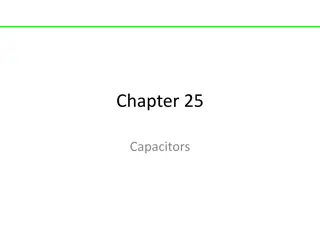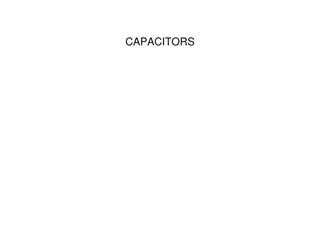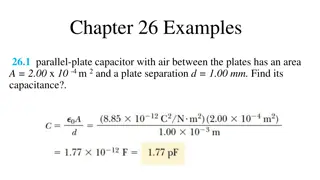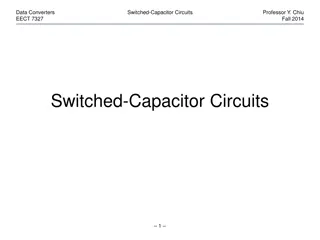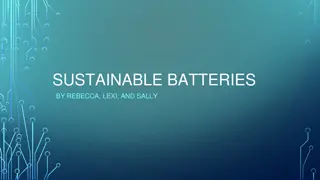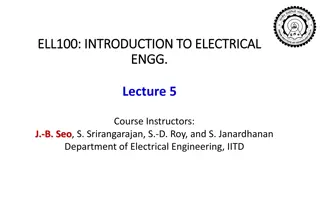Batteries & Capacitors
In this informative content, explore the history, components, and workings of batteries and capacitors. Discover how batteries store electricity, key components of a battery, and the science behind rechargeable batteries. Learn about Alessandro Volta's invention of the first battery in 1798, the advancements in battery technology over the years, and the importance of batteries in powering various devices. Dive into the chemistry behind batteries that enables the continuous flow of electricity. Uncover the role of capacitors and their contribution to electronics.
Download Presentation

Please find below an Image/Link to download the presentation.
The content on the website is provided AS IS for your information and personal use only. It may not be sold, licensed, or shared on other websites without obtaining consent from the author.If you encounter any issues during the download, it is possible that the publisher has removed the file from their server.
You are allowed to download the files provided on this website for personal or commercial use, subject to the condition that they are used lawfully. All files are the property of their respective owners.
The content on the website is provided AS IS for your information and personal use only. It may not be sold, licensed, or shared on other websites without obtaining consent from the author.
E N D
Presentation Transcript
Batteries & Capacitors And How They Work!
What are the ways we store electricity? What are some objects that require batteries that you use?
Battery History The word circuit comes from the Latin circuitus, which means to go around Volta s Battery! Plant s Lead-acid Battery! The first battery was created by Alessandro Volta in 1798. Volta was an Italian professor in physics and chemistry In 1859, Gaston Plant invented the lead-acid battery, the first- every battery that could be recharged by passing a reverse current through it. We honor him today by calling our standard measure of electricity the volt
Battery History In the 1950 s, the first cylindrical alkaline batteries were made In the 1980 s, the first lithium- ion batteries were made and released to the public. Lithium is the metal with the lowest density and with the greatest energy-to-weight ratio, so is ideal for making batteries common alkaline batteries Today, scientists work to improve the life and power of batteries using a variety of advanced technologies lithium-ion batteries in an electric car
Battery Basics A battery uses chemistry, not mechanical movement, to create a continuous flow of electricity. A battery is able to create a continuous flow of DC (direct current) electricity until all of the energy in the battery is used. Americans purchase nearly 3 billion batteries every year to power radios, toys, watches, laptops, tools and more.
3 Key Battery Components Positive electrode or terminal accepts electrons from circuit Negative electrode or terminal releases electrons onto circuit Electrolyte! Separated by an electrolyte which serves as a barrier to electrons Q: What kind of charge does an electron have?
The Electric Circuit When the circuit is closed, chemical reactions begin within the battery to produce ions and electrons. CIRCUIT Ions! + Positive Electrode Electrons travel around the outer circuit from the positive electrode to the negative electrode. + + Negative Electrode Meanwhile, ions travel within the battery towards the positive electrode. Electrons!
Rechargeable Batteries A battery is able to recharge if it can run the chemical reactions in reverse. CIRCUIT CIRCUIT Ions! + Positive Electrode Electrode Positive While charging, electrons travel around the outer circuit in the opposite direction and ions travel back towards the electrolyte. Power Source ! + + Negative Electrode Electrode Negative Electrons! Electrons!
Capacitors What are other potential components of an electric circuit?
Capacitors Capacitors are another way we store energy, this time electrically instead of chemically. Capacitors are just as common and important as batteries in powering modern society They are created by 2 metal plates separated by an insulating called a dielectric.
How Capacitors Work The plate on the capacitor that attaches to the negative terminal of the battery accepts electrons the battery produces. The charges get stuck on the plate because they can t travel through the dielectic, giving that plate a strong negative charge. The plate on the capacitor that attaches to the positive terminal loses electrons to the battery, causing it to develop a strong positive charge. When it s charged, the capacitor has the same voltage as the battery.
Capacitor Uses To store charge for high-speed use, like the flash in a camera! To eliminate ripples - a capacitor can even out the voltage from a typical outlet To convert voltage from a direct current (DC) to an alternating current (AC) Capacitive Touch Screens a built-in electrode pattern charges the screen so when touched, a current is drawn to the finger and creates a voltage drop.
Lets act out our own electric circuit!
Lets act out our own electric circuit! Let s form a circle One person will represent the battery The rest of the participants will represent the wire conductor The circle itself represents a circuit
